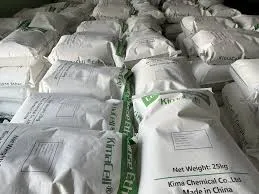
Dec . 06, 2024 11:03 Back to list
HPMC Applications in Skim Coating for Enhanced Performance and Finish Quality
Understanding HPMC for Skim Coating An Essential Polymer in Modern Construction
In the world of construction and finishing, the choice of materials can drastically affect the quality and durability of the final output. One such material that has gained prominence for its exceptional properties is Hydroxypropyl Methylcellulose (HPMC). This polymer plays a crucial role in skim coating applications. Skim coating is a widely used technique designed to produce a smooth and even surface on walls and ceilings, providing a perfect base for further finishes, such as paints or wallpapers.
What is HPMC?
Hydroxypropyl Methylcellulose (HPMC) is a non-ionic, water-soluble cellulose ether, derived from natural cellulose. It is widely used in various industries, including construction, pharmaceuticals, and food production, owing to its multifunctional characteristics. In the realm of construction, particularly in skim coatings, HPMC serves several purposes, contributing to the overall performance of the application.
Benefits of Using HPMC in Skim Coats
1. Improved Workability One of the significant benefits of incorporating HPMC into skim coat formulations is its ability to enhance workability. It provides a smooth and creamy texture, making it easier for contractors to apply the skim coat evenly. This factor is crucial in construction, where the application process directly influences the surface finish quality.
2. Extended Open Time HPMC increases the open time of the skim coat. Open time refers to the duration during which the material remains workable before it sets. By prolonging this timeframe, HPMC allows applicators to work at a more flexible pace, making it easier to achieve a perfect finish without the stress of rushing against setting times.
hpmc for skim coat

3. Water Retention Another essential property of HPMC is its outstanding water-retention ability. This characteristic is vital in ensuring that the skim coat does not dry out too quickly, especially in warm or dry environments. Adequate water retention prevents cracks and ensures proper curing, which contributes to the durability and longevity of the surface.
4. Adhesion and Bonding HPMC enhances the adhesion of skim coats to various substrates, including concrete, drywall, and plaster. This improved bonding not only ensures that the skim coat adheres effectively but also eliminates the chances of peeling or flaking over time, maintaining the aesthetic quality of the surface.
5. Eco-Friendly Characteristics As a cellulose derivative, HPMC is considered environmentally friendly. Its non-toxic nature makes it a safer alternative compared to other chemical additives used in construction. This is especially important in residential applications where the health and safety of occupants are paramount.
Applications Beyond Skim Coating
While HPMC has carved its niche in skim coating formulations, its applicability extends to many other construction materials, such as tile adhesives, grouts, and self-leveling compounds. Its multifunctional properties, such as thickening, stabilizing, and film-forming capabilities, make it a versatile additive in different applications throughout the construction industry.
Conclusion
In summary, HPMC has become an integral component in the formulation of skim coats, significantly contributing to the enhancement of workability, open time, and adhesion properties. Its ability to improve water retention and promote environmental sustainability adds to its appeal for modern construction projects. As the construction industry continues to evolve, the adoption of innovative materials like HPMC ensures that final finishes not only meet but exceed the expectations of builders and clients alike. The use of HPMC in skim coating exemplifies a commitment to quality, efficiency, and sustainability in construction practices, highlighting the importance of selecting the right materials for optimal outcomes.
-
Versatile Hpmc Uses in Different Industries
NewsJun.19,2025
-
Redispersible Powder's Role in Enhancing Durability of Construction Products
NewsJun.19,2025
-
Hydroxyethyl Cellulose Applications Driving Green Industrial Processes
NewsJun.19,2025
-
Exploring Different Redispersible Polymer Powder
NewsJun.19,2025
-
Choosing the Right Mortar Bonding Agent
NewsJun.19,2025
-
Applications and Significance of China Hpmc in Modern Industries
NewsJun.19,2025







